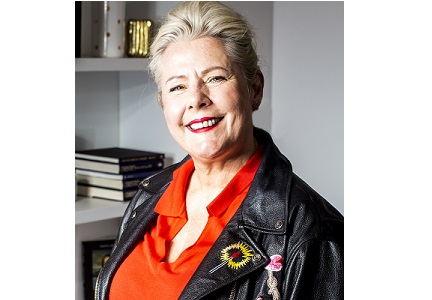2020 was a disruptive year for every sector, not least for influencer marketing, which brands used to reach consumers at the expense of print, OOH, and broadcast advertising. Mary Keane-Dawson, Group CEO of global influencer marketing agency TAKUMI, offers insight on the key influencer marketing trends of 2020 and her predictions for the sector in 2021.
2020 is a year that will make history. From March, the world was placed into lockdown, with life as we knew it drawing to a dramatic halt. The casual deed of ‘popping out’ became a treasured luxury and the ‘2-meter rule’ became a phrase ingrained in our vocabulary. People were stuck inside and the desire to stay connected through social media flourished.
With 2020 behind us, it will be interesting to see what new social media trends emerge from such a turbulent year.
The emergence of content creators as miniature media outlets
As many of us were stuck at home, we started to increasingly rely on digital and social network channels to access updates and different opinions on current affairs. Due to the social restrictions, more traditional marketing channels such as events, print and out-of-home (OOH) ceased to offer brands the same return on investment as they did pre-pandemic.
As a result, brands started to approach influencer marketing spend differently. In August 2020 our whitepaper surveyed over 4,000 consumers, influencers and marketers across the UK, US and Germany, and found that 73% of all marketers had allocated a greater amount of budget to influencer marketing during the previous 12 months. Interestingly, we also found it was marketers from traditional media channels that were increasing their influencer marketing spend the most.
But as well as an increased reliance on influencers for brand marketing, perceptions of influencers have also changed since the start of the pandemic. In an age of misinformation, content creators have emerged as new miniature media outlets with 24% of all consumers admitting they are more likely to source news updates from influencers than journalists. Consequently, many brands had to re-establish how they communicate and connect with their customers and reassess perceptions of influencers and social media.
Social media as a platform for political content
It is hard to ignore the significance of social media in politics. The last two Presidents of the United States have both used Twitter as another way to communicate with the public, alongside the press.
President Trump was renowned for it. He used the platform to gain a huge following ahead of the 2016 election which, according to Trump himself, helped him win the election.
Social media and politics became further entwined after the recent Capitol attack in Washington earlier this month. Facebook and Twitter have since banned Trump from both its platforms as he was accused of instigating violence and spreading misinformation. In response, Matt Hancock, the UK’s health sectary, commented that social media giants are starting to make editorial decisions and judgments and therefore a regulatory framework needs to be put in place. This could have far-reaching consequences for the platforms which claim to champion free speech. If new regulations were imposed it could help to reduce misinformation and the mental health of users, but the responsibilities to police it opens up a potential can of worms for 2021.
TikTok
Ever since the world was thrust into lockdown back in March, the popularity of TikTok has excelled. TikTok provided viewers with short, light-hearted relief from the anxieties of the world (think of all those famous pop songs that went viral in 2020 because of TikTok)!
With TikTok’s popularity growing, a wider variety of brands started to see its value. In partnership with TAKUMI, the retailer Wickes launched the first influencer marketing campaign on TikTok by a UK home improvement brand. Wickes used TikTok to reach a new audience with authentic and creative content and to drive awareness of its range of products.
The app also launched its new ‘TikTok Creator Portal’ earlier this month. The portal contains educational resources and advice for its creators. It will certainly be exciting to see what else is to come from TikTok this year.
Commerce through apps
Last year, Instagram added the shopping tab feature and allowed brands to attach a virtual shopping tag to their ads on the platform. People can now click on a tagged item and then be re-directed to the brands’ product webpage.
In the US, Instagram has gone one step further and incorporated an in-app checkout function. People can now purchase a product directly through the brand’s Instagram. By offering seamless, one-click shopping experiences, it could be argued that social media platforms might start to rival e-commerce giants such as Amazon in 2021.
The year 2020 was disruptive for everyone. Social media evolved to provide its users with entertainment, information, and new ways to shop. It will be exciting to see what 2021 has in store for social media and how brands will utilise social media platforms, such as TikTok and Instagram, to make themselves stand out from their competitors.
By Mary Keane-Dawson
Group CEO
